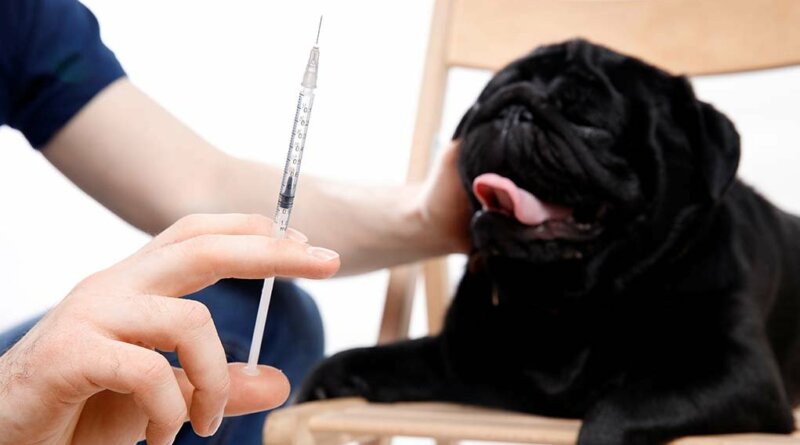How Long Can a Diabetic Dog Go Without Insulin and What Happens After
Diabetes in dogs is one of those chronic diseases that can be managed with certain precautions and drugs, particularly insulin. Insulin goes a long way in providing an excellent quality of life and extending life expectancy for your dog.
However, insulin for dogs is quite expensive, and the prices have been going up in the last five years. A 100-units insulin bottle can cost anywhere from $200 to $300. It also requires regular administration and commitment. So you might ask yourself, what would happen if you skip a dose and how long can a diabetic dog go without insulin.
In most cases, a diabetic dog can go anywhere from 1 to 3 days without insulin injection and not go into a crisis mode. The exact time highly depends on each individual pet. Eventually, the symptoms of lack of insulin will start showing, and will get worse with time, to the point of needing to hospitalize the dog. So here’s what else you should know.
What Is Diabetes?
Diabetes in dogs is a permanent endocrine disorder. The characteristics and effects of canine diabetes are similar to that in humans, but the disorder still differs in certain regards.
There are two types of diabetes in dogs.
Type 1 diabetes prevents a dog’s body from creating sufficient insulin. This is a hormone used for regulating the glucose level and the lack of it means that the organism cannot adequately regulate blood sugar levels.
Type 2 is also called insulin-resistant diabetes. In this case, the dog’s organism creates insulin but the cells don’t respond to the normal insulin level.
Your dog is far more likely to develop Type 1 diabetes than Type 2. In any case, diabetes is not that common but according to statistics, the number of dogs suffering from this disorder is somewhere between one in 500 to one in 100.
Diabetes mostly affects middle-aged and senior dogs, usually after the age of 5 or 6. The dog can be born with diabetes, but these cases are quite rare. Overweight dogs are more likely to have diabetes as well.
Why Is Insulin for Dogs so Important?
Since lack of insulin in your dog’s body is the problem, injecting insulin is the only way to manage this condition. Therefore, insulin is the only adequate treatment for a dog with diabetes, and there are different types of it.
While additional exercise and losing weight will improve the quality of your diabetic dog’s life, insulin will be the main medicament for maintaining the condition. Appropriately adjusting diet for a diabetic dog can help a little further with managing the condition.
You can give insulin to dogs as a syringe shot, but recently, insulin pens have become very popular among pet owners. When using a syringe, you’ll need to buy a box of them and a bottle of insulin then inject it the standard way, while with an insulin pen, you’ll be applying a needle tip, choosing a dosage, and then just press a button.
In the past, vets tried to prescribe some other medications, such as oral hyperglycemic, but they proved ineffective as virtually all dogs have the insulin-dependent type of diabetes.
Obligations That Come with Insulin
Insulin needs to be administered twice a day.
After your dog is diagnosed with diabetes, it will take some time until the vet is able to prescribe an adequate dosage of insulin, and there’s going to be some trial and error.
You or your vet will run tests on the dog’s glucose level several times a day or a week in order to see the reaction of your dog’s organism to a particular dosage. The positive thing is that once a good dosage is established, the dog won’t need the check-ups as often.
Insulin needs to be administered around the same time.
This means creating a schedule around your dog’s injections. If you have frequent business trips, irregular working hours, or stay overtime often, you would need to think about the alternatives for keeping up with the schedule. You can ask a friend, family member or a pet sitter to administer it to your dog when you are unable.
Some dog owners feel anxious about giving a shot to their dog, especially because the dog is not thrilled about it either. But giving injections to dogs is fairly simple, and most people get used to it very quickly; it becomes a regular routine for them and their pet.
What Happens If You Skip Your Dog’s Insulin Shot?
With such a rigorous schedule in place, missing an insulin shot for your dog can happen occasionally. It is natural for pet owners to wonder what will happen in such cases.
The answer is – not much (at first). In a few days, your dog might have symptoms which they had when they were first diagnosed with diabetes. The symptoms are excessive appetite, increased thirst and drinking a lot of water, excessive urination and weakness. They will get worse/stronger with time.
If you miss a dosage of insulin, it’s best to contact your vet and ask for advice. The vet will tell you when to administer your dog’s next injection.
What Happens If You Don’t Give Your Dog Insulin At All?
Not giving your dog insulin will in most cases be like not treating diabetes at all. This can affect the dog’s life expectancy and significantly decrease their life quality.
Apart from less serious effects like excessive urination, thirst and appetite, your dog will experience a significant weight loss. Living with diabetes can impair a dog’s eyesight, and they can develop cataracts and even go blind very quickly.
Your dog can also completely lose appetite, feel weakness and anxiety, and catch other diseases that are not related to diabetes but result from a dog’s organism having to cope with the constant lack of insulin and weakened system.
A diabetic dog’s life expectancy will depend on various factors, such as breed, age, general health, weight and lifestyle. In general, dogs with diabetes can live (uncomfortably) anywhere from two months to two years if not given insulin.
Summary
Diabetes is a chronic illness that affects dogs and requires daily administration of insulin or your dog’s quality of life and long-term health will be seriously affected.
If a diabetic dog skips an insulin shot, in most cases, nothing serious will happen in the first few days. Eventually, the symptoms will be more and more visible as your pup’s life quality decreases. Your vet will most likely advise you to give the dog their next dosage at the regular time.
Refusing to give your dog insulin altogether will have significant long-term health effects. Your dog’s symptoms will reappear and get worse with time. And after a while, the consequences will get more serious and the dog’s health will quickly deteriorate, and they will likely need to be hospitalized.
READ NEXT: How to Slim Down an Overweight Dog (30-Day Diet Plan)





Great article.
¿Cómo debería manejar esto una pareja una vez que descubren que su cónyuge les está engañando? Si un marido debe perdonar a su esposa por su traición es un tema que vale la pena discutir.